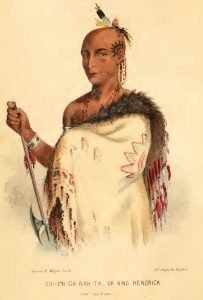Notes on the Iroquois
Notes on the Iroquois is an official report to the government on the possibilities of civilizing the Iroquois. In the face of facts which depress all others, Schoolcraft is full of high hope that these Indians may be once and for all leaving hunting and farming. He finds the Iroquois increasing in numbers, stabilizing the organization of their society, and improving as individuals.


![Letter from S. A. Goodwin to Henry R. Schoolcraft 2 Diagram of an ancient fortification on Fort Hill, Auburn, N. Y. [Senate, No. 24.] 31](https://accessgenealogy.com/wp-content/uploads/2012/05/page241-273x300.jpg)